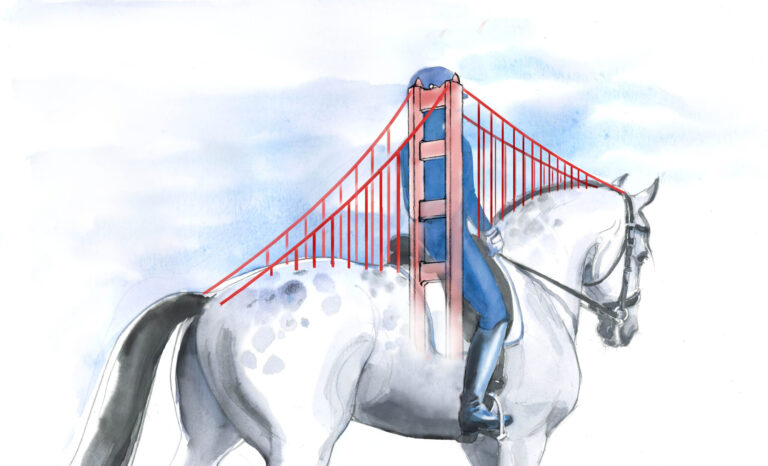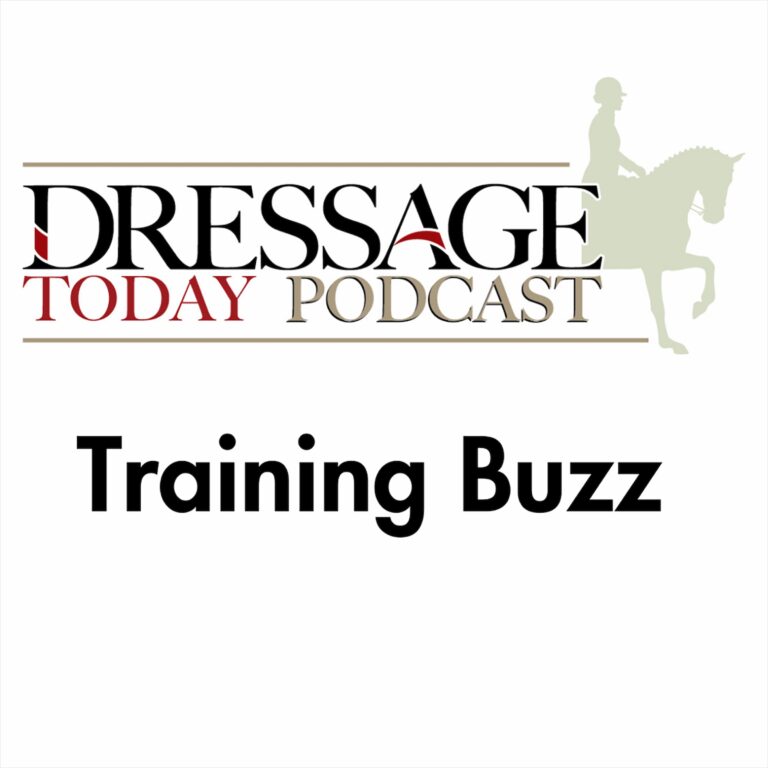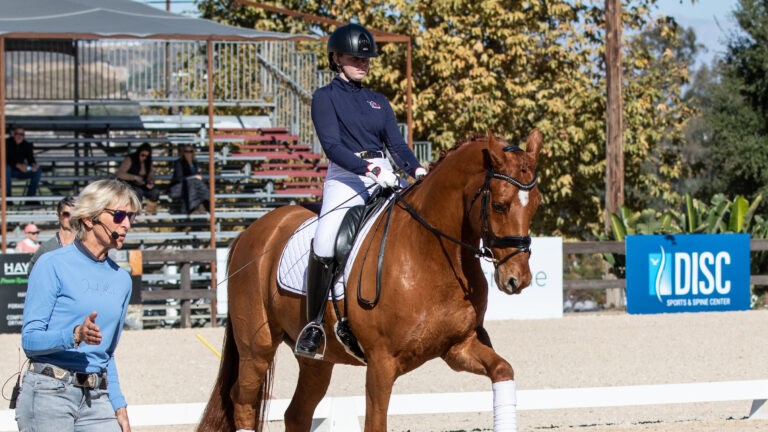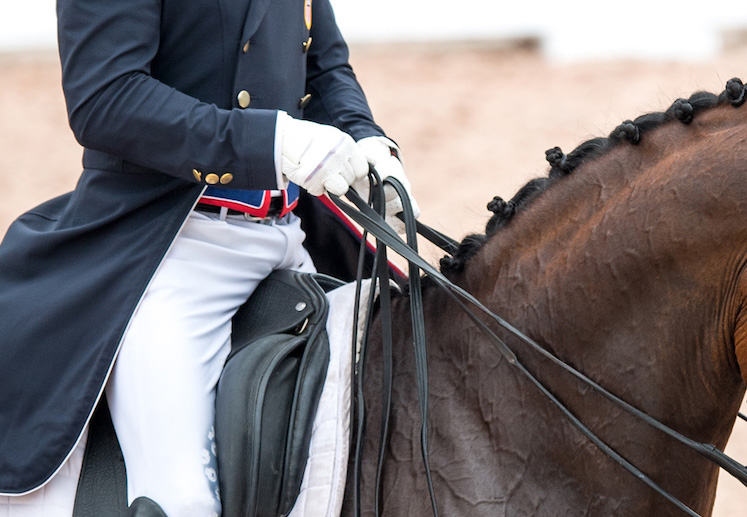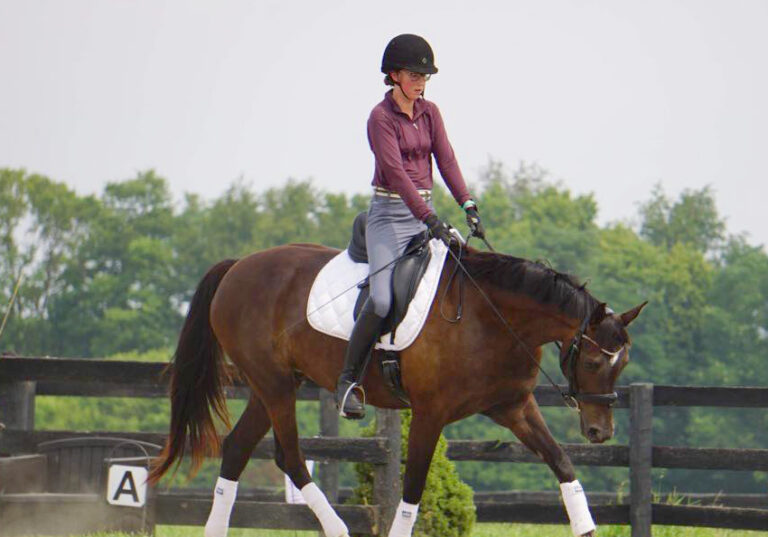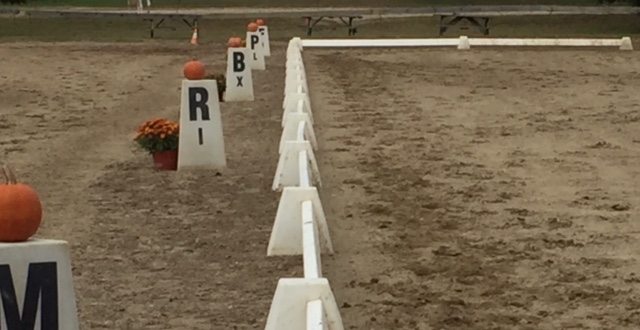In Part 1 of this blog, I shared eight ways to survive “Flying Change Hell.” In this second part, I’d like to share two exercises that can help you improve your horse’s flying changes.
Finding the most effective way to teach a horse flying changes is much like figuring out a puzzle. It is about experimenting to find successful approaches for each individual horse. It is about being able to evaluate what is happening within the horse’s body during the moment of the change and then tailoring exercises that will give the horse the best opportunity for success.

In the very early stages when I am asking the horse for the change for the first time, I will head across the diagonal, just like in a Third Level dressage test. In this early stage, my expectations are low and I am just testing the waters to see what happens. I will pay attention to straightness and canter quality and I will ask for the change and see what happens. Once I have an idea what my horse’s tendency will be in the changes, I can start to plan my approach. Does he surge forward? Is he nonreactive? Does he get crooked? Does his croup come up? Does he change late behind? Late in front?
Remember the flying change is simply a canter depart that takes place in the moment of suspension and your aids should mirror your canter depart aid. This is why I spend a lot of time on canter departs prior to teaching changes, making sure they are straight, prompt and connected. It is important that you have the ability to ride the horse’s hind legs and that he is responsive to your half halt. So, if you are in left lead canter, your left seat bone should be weighted and you should have a clear connection from the left leg to the outside right rein in order to keep the horse straight by riding shoulder-fore. Your outside (right) leg is behind the girth. For the change, you will simply switch your aids: Your seat bone shifts to the right, your outside leg comes back and the outside rein shifts from the right rein to the left. The change aid, like the canter depart aid, happens quickly. In the change, it happens in the moment of suspension, when all four legs are off the ground. It can take some practice to get familiar with the timing of the change aid. Be kind to yourself as you learn!
Below I have shared some of my favorite exercises to teach the changes. It is not uncommon for one exercise to work to address a flying change in one direction and another exercise works better to address the change in the opposite direction.
Exercise 1: Counter Yield to Flying Change
In order for the change to be clean and on the aids, the horse must be straight. A horse who is crooked cannot be through the back and a horse who is not through the back will be blocked so that the energy cannot freely move through him. In the flying changes, this will show up by the horse kicking out or popping his croup up or changing late behind.
This exercise is great for a horse who wants to swing the haunches and get crooked in the change. I can’t emphasize enough the importance of straightness in preparing for and executing a clean change.
For the sake of simplicity in this exercise, I’ll explain how to ride a right-to-left change—although you can school this same exercise in either direction.
- Start on the right lead in true canter.
- Head down the centerline of the arena and yield from left to right, making the horse straight from the left leg.
- Soon after you get to the rail, ask for the change. When you do this on the right lead, the exercise can be useful for a horse who wants to fall on the left shoulder and push the right hind leg out. When done on the left lead, this exercise is useful for a horse that wants to fall on the right shoulder and push out the left hind leg.
- Be sure to hold you horse’s shoulders to the rail after the yielding to keep him straight for the change. For a horse who wants to surge forward while disengaging his hind legs, you can time it so you ask for the change just before the corner to use the visual barrier of the arena wall to sit the horse back over the hind legs.
Exercise 2: Counter-Canter Square
I like this exercise for horses who have a tendency to surge forward off the hind legs when they are on a straight line. In this exercise, we use a smaller figure to keep the horse more collected on the hind legs. Attention must be made to keeping the hind legs quick and active, so for a horse who tends to be sluggish and disengaged, this may not be the best exercise.
- You can begin in either direction.
- You can either pick up the counter canter or you can pick up true canter and change rein, holding the counter canter.
- You can choose any size figure you wish, but I usually ride a 20-by-20 meter square. Pay attention to making sure that your horse is not leaning on your inside leg. Focus on straightness. Allow the corners of your square to rebalance the horse to the hind legs. Position your horse to the inside just slightly and ask for the change whenever you feel he is active behind and straight through the body. If the horse offers a good change, continue on a circle line and reward him with a pat on the neck.
Tips for Success
In the early stages, I do not get too concerned if the horse does not change immediately on the aid. He first has to understand how to get from Point A to Point B and much of training flying changes is the horse mentally and physically trying to make the connection of how to move from one lead to the other when the aid is applied. Once he begins to understand what we are asking of him, we can be pickier about making sure the flying change happens right on the aid.
Find an exercise that combats your horse’s natural crookedness. For example, the horse I am teaching changes to right now has the tendency to fall on his left shoulder and push his right hind out. In order to keep him straight in the change, I have to think a little haunches-in left or shoulder-in right to keep him closed up from that right hind to the left shoulder. I really like asking for changes from the counter canter because we can use the horse’s natural desire to move to the more comfortable true canter to our advantage.
Teaching the changes can really increase your attention to the fine details of straightening and collecting the horse. A well-balanced change comes from a well-balanced canter and canter quality should always be our first priority.
Jenna Arnold is a USDF bronze, silver and gold medalist and bronze, silver and gold Freestyle Bar recipient. She is the mother of two daughters and runs Concordia Dressage with her husband, Martin Arnold, near Austin, Texas.


